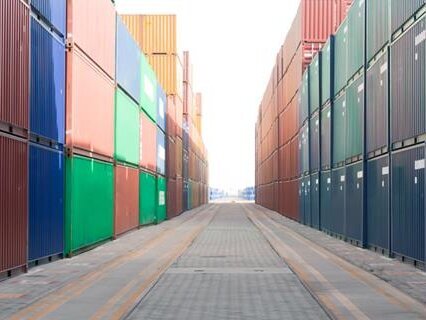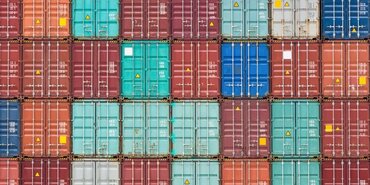TT Talk - How to build climate resilience into logistics

Ports, terminals, and logistical transport networks are increasingly exposed to climate-related hazards, with floods, storms, heatwaves and rising sea levels posting a growing threat to operational continuity and global trade.
In September 2025, TT Club published a white paper called Climate-ready Supply Chain. It provides guidance for ports, waterways and logistics operations on how to adapt and build resilience, ensuring business continuity and supporting insurance compliance.
Understanding climate resilience
Climate resilience in logistics refers to the capacity of supply chains and transport systems to absorb, adapt and recover from climate shocks while maintaining their essential functions. It goes beyond adaptation, such as raising quay walls or reinforcing drainage systems, to encompass the broader ability to withstand and quickly recover from disruptions. In practice, this means integrating climate risk management into every aspect of logistical transport, from infrastructure design to operational planning and insurance coverage.
Recent years have seen a dramatic increase in climate-related disruptions.
In 2024 alone, extreme weather events caused widespread shutdowns, infrastructure damage and economic losses across every continent. Hurricanes in the Americas, floods in Asia, droughts in Africa and wildfires in Australia have all highlighted the vulnerability of even the most advanced logistics infrastructure.
According to the Intergovernmental Panel on Climate Change, global temperatures are projected to rise by 2.5°C to 3°C by the end of the century, intensifying the frequency and severity of extreme weather events. For port, waterway and terminal operators, this means that climate risk is no longer a distant concern but a present and escalating threat to business continuity and profitability.
Building climate-resilient operations
There are four main stages to building a climate-resilient logistics operation: risk assessment, adaptation planning, practical solutions, and monitoring and review.
The foundation of a resilient supply chain is robust climate risk management, which begins with gathering and analysing climate data—including historical trends, real-time monitoring and predictive modelling—to spot vulnerabilities in infrastructure and operations. Technologies like internet of things (IoT) sensors and artificial intelligence (AI) analytics enable early warning systems and predictive maintenance, helping to optimise resource allocation and minimise downtime.
The next stage is developing a climate adaptation plan. This involves mapping hazards such as flooding and heatwaves, then assessing exposure and vulnerability, and prioritising actions based on likelihood and impact. Adaptation measures may include raising critical physical infrastructure, reinforcing flood defences and implementing flexible operational protocols.
The third stage is to start implementing practical resilience solutions. Short-term actions might involve staff training, emergency response planning and temporary infrastructure upgrades. Medium- and long-term strategies include investing in renewable energy, building green infrastructure like permeable pavements and rain gardens, and adopting modular, climate-resilient construction. Collaboration with stakeholders – including other ports, government agencies and research institutions – will enhance knowledge sharing and collective resilience.
Finally, staying climate resilient requires ongoing monitoring of adaptation measures, regular risk profile reviews and updates to plans as new data and technologies emerge. This ensures that resilience strategies are still effective and responsive to evolving threats.
Insurance considerations
Transport and cargo insurance policies are evolving to reflect the realities of climate risk. Insurers increasingly need evidence of climate risk management and adaptation planning as part of policy compliance. For TT Club Members, integrating climate resilience into operations not only reduces the likelihood and severity of claims but also supports business continuity.
Key insurance considerations include ensuring that infrastructure upgrades and operational changes are documented and communicated, reviewing policy coverage for climate-related perils such as business interruption and supply chain disruption, and leveraging risk insights and resources provided by insurers to inform adaptation strategies.
TT Club is committed to helping Members navigate the complexities of climate resilience logistics. The Club provides regular updates on emerging climate risks and best practices for mitigation; practical tools, whitepapers and case studies to support Members in developing and implementing adaptation strategies; and engagement with industry bodies and regulators to shape standards and promote resilient supply chains.
Conclusion
Building climate resilience in logistics is not just a matter of compliance or risk mitigation—it is a strategic imperative for sustainable growth. By integrating climate risk management and investing in adaptation, logistics companies can ensure the continuity and competitiveness of their operations in an increasingly unpredictable world.
Key takeaways
- Climate-related hazards pose immediate and escalating threats to ports, terminals and logistics networks worldwide
- Climate resilience encompasses the capacity to absorb, adapt and recover from climate shocks whilst maintaining essential functions
- Global temperatures projected to rise 2.5°C to 3°C by century's end will intensify extreme weather frequency and severity
- Building resilience requires four stages: risk assessment, adaptation planning, practical solutions and ongoing monitoring
- IoT sensors and AI analytics enable early warning systems and predictive maintenance for operational optimisation
- Insurance policies increasingly require documented climate risk management and adaptation planning for compliance
- Collaboration with stakeholders enhances knowledge sharing and collective resilience across the sector
- Climate resilience represents a strategic imperative for sustainable growth, not merely compliance
Frequently asked questions
What is climate resilience in logistics?
Climate resilience refers to supply chains' and transport systems' capacity to absorb, adapt and recover from climate shocks whilst maintaining essential functions. It encompasses both physical adaptations and broader operational capabilities ensuring continuity during disruptions.
How can ports build climate resilience?
Ports should follow four stages: conduct climate risk assessments using data analytics and IoT sensors, develop adaptation plans prioritising actions by likelihood and impact, implement practical solutions from staff training to green infrastructure, and maintain ongoing monitoring with regular plan updates.
Why is climate resilience important for insurance?
Insurers increasingly require evidence of climate risk management and adaptation planning for policy compliance. Integrating climate resilience reduces claim likelihood and severity, supports business continuity, and ensures adequate coverage for climate-related perils including business interruption.
Documents
TT_Talk_-_Edition_327__Chinese_.pdf (423 kB) 22/10/2025
- Author
- Neil Dalus
- Date
- 06/10/2025





